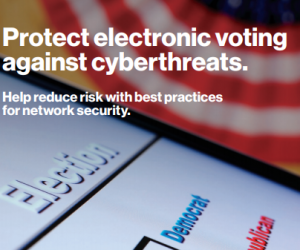
Sorry, your browser is not compatible with this application. Please use the latest version of Google Chrome, Mozilla Firefox, Microsoft Edge or Safari.
Protect Electronic Voting Against Cyberthreats
Voter confidence in the election process rises and falls based on a mix of real and perceived risks. Real risks to elections may include domestic or foreign cyberthreats and vulnerable voting technologies. Then there are the perceived threats, which may include social media rumors and disinformation. But the lasting impression on the general public is clear—concerns about voting continue to rise. In fact, as of April, 2020, an average of only 59% of US citizens (75% Republican, 43% Democrat) believe that the 2020 November elections will be conducted fairly and accurately. The approaches explored here, focused primarily on networking, can help strengthen security— and bolster voter confidence.
The 2000 presidential election, considered one of the closest elections in U.S. history, was a watershed event that shook voter confidence, thanks, in part, to its high-profile technical difficulties (the legendary hanging chads). Since then, voting technology has evolved, but concerns and risks remain. Cyberthreats, domestic and international, have become more pervasive and visible. News reports and documentaries focus on the many flaws in the inherently fragmented U.S. election system. And heated debate continues about the best method of holding elections, from paper ballots to electronic voting, to online voting

| Format: |
|
| Topics: | |
| Website: | Visit Publisher Website |
| Publisher: | Verizon |
| Published: | July 1, 2020 |
| License: | Copyrighted |
| Copyright: | © 2020 Verizon |
Featured Content

Contact Publisher


Claim Content





